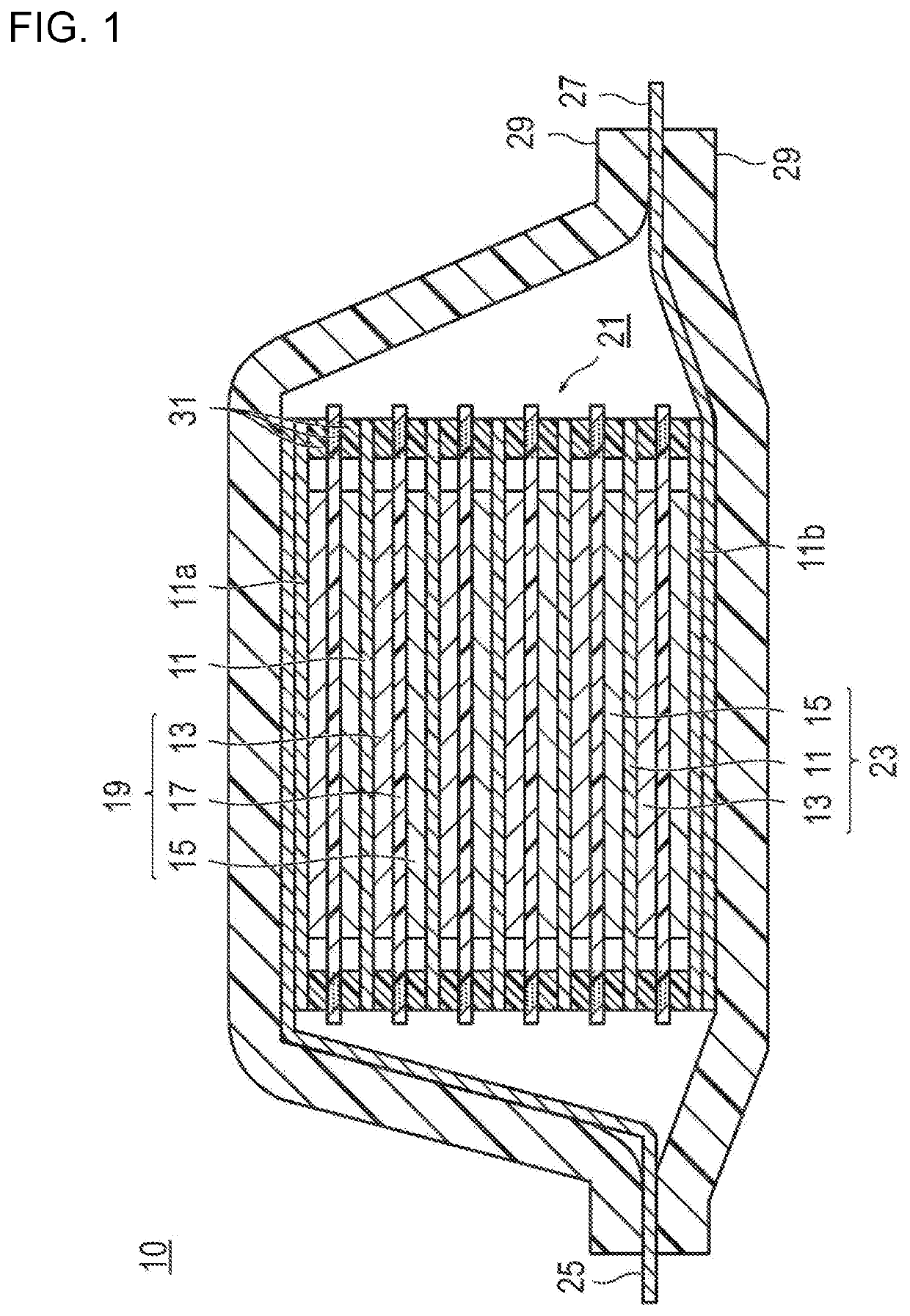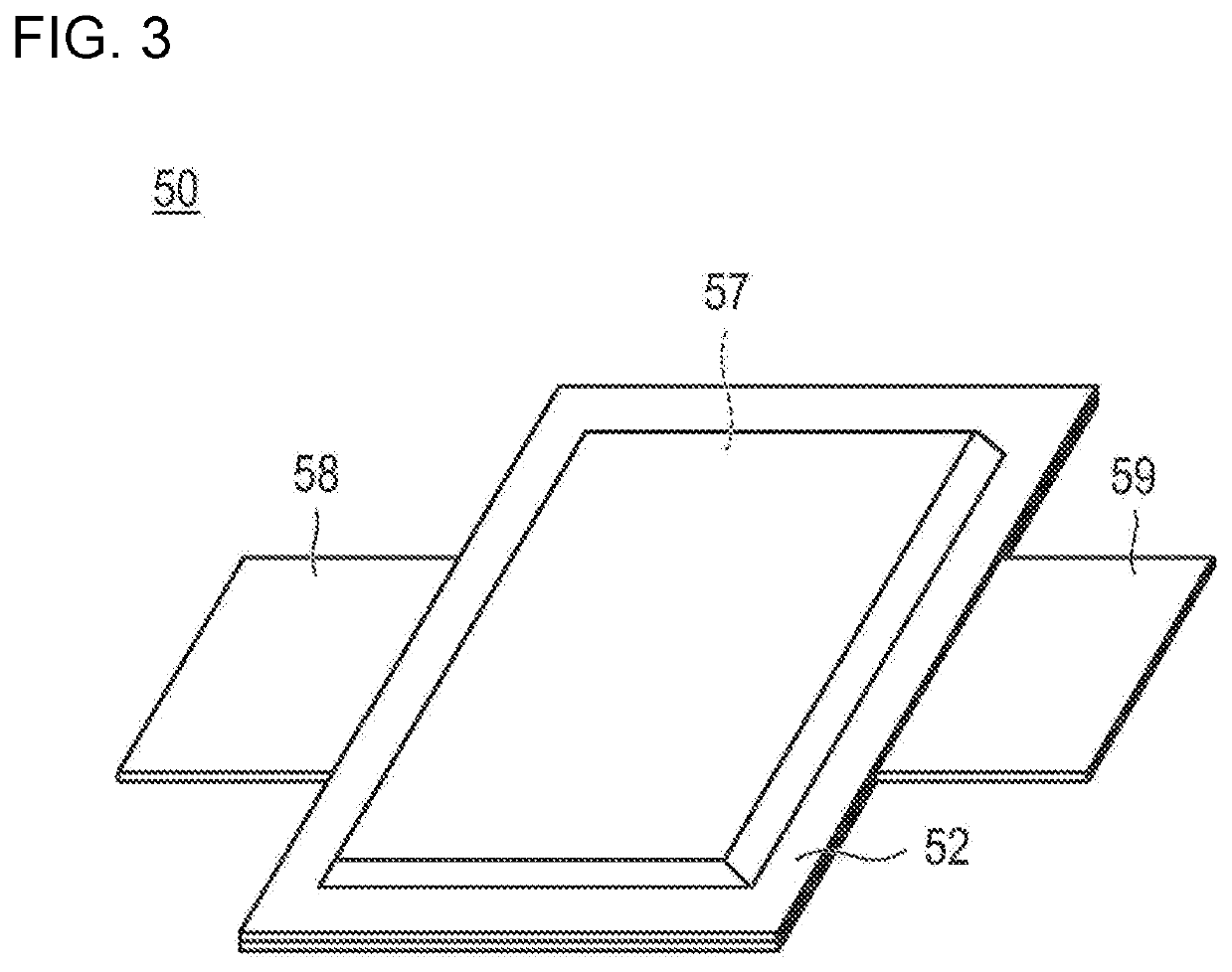Method for producing electrode for non-aqueous electrolyte secondary battery
a technology of non-aqueous electrolyte and secondary batteries, which is applied in the manufacture of final products, cell components, electrochemical generators, etc., can solve the problems of reducing the input-output characteristics, and reducing the energy density of the battery, so as to reduce the cycle durability, improve the internal resistance of the battery, and improve the effect of battery characteristics
- Summary
- Abstract
- Description
- Claims
- Application Information
AI Technical Summary
Benefits of technology
Problems solved by technology
Method used
Image
Examples
example 1
[0261]
[0262]LiPF6 was dissolved at a ratio of 2 mol / L in a mixed solvent of ethylene carbonate (EC) and propylene carbonate (PC) (volume ratio: 1:1) to obtain an electrolyte solution. Incidentally, EC and PC correspond to a first solvent.
[0263]
[0264]A material 1 formed of 93.9 parts of LiNi0.8Co0.15Al0.05O2particles as a positive electrode active material, 5.8 parts of acetylene black [Denka Black (registered trademark) manufactured by Denka Co., Ltd.] (average particle diameter (primary particle diameter): 0.036 μm), and 2.9 parts of a carbon fiber (DONACARBO Milled S-243 manufactured by Osaka Gas Chemicals Co., Ltd.: an average fiber length of 500 μm, an average fiber diameter of 13 μm: an electric conductivity of 200 mS / cm)) as a conductive aid was dried for 16 hours at 120° C. under reduced pressure of 100 mmHg to carry out removal of moisture contained.
[0265]Subsequently, in a glove box, 31 parts of the electrolyte solution prepared above, 0.3 part of polyvinylidene fluoride (P...
example 2
[0275]
[0276]In a glove box, 5 parts of polyvinylidene fluoride (PVdF) having a weight average molecular weight of 380,000 as a semi-crystalline polymer and 95 parts of dimethyl carbonate (DMC) as a PVdF-dissolving solvent (a second solvent) were uniformly dissolved by mixing and stirring to prepare a solution in which PVdF was dissolved in DMC (PVdF solution: a concentration of the solid content of 5% by mass).
[0277]
[0278]A positive electrode active material slurry 2 was prepared by the same method as in Example 1 as described above, except that 6 parts of the PVdF solution prepared above were added in the preparation of a positive electrode active material slurry, instead of separately adding 0.3 part of PVdF and 5.7 parts of DMC.
[0279]A positive electrode was manufactured by the same method as in Example 1 as described above, except that the positive electrode active material slurry 2 as prepared above was used.
[0280]
[0281]A negative electrode active material slurry 2 was prepared...
PUM
| Property | Measurement | Unit |
|---|---|---|
| thickness | aaaaa | aaaaa |
| temperature | aaaaa | aaaaa |
| RH | aaaaa | aaaaa |
Abstract
Description
Claims
Application Information
 Login to View More
Login to View More - R&D
- Intellectual Property
- Life Sciences
- Materials
- Tech Scout
- Unparalleled Data Quality
- Higher Quality Content
- 60% Fewer Hallucinations
Browse by: Latest US Patents, China's latest patents, Technical Efficacy Thesaurus, Application Domain, Technology Topic, Popular Technical Reports.
© 2025 PatSnap. All rights reserved.Legal|Privacy policy|Modern Slavery Act Transparency Statement|Sitemap|About US| Contact US: help@patsnap.com



